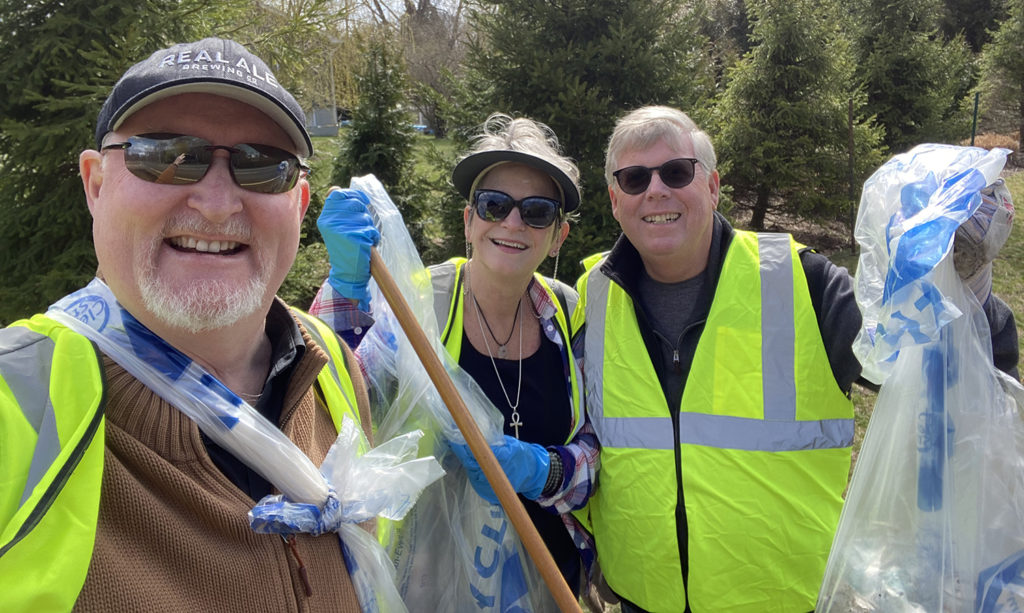From puppyhood on Shelter Island to a life of service

Weeksie in his training vest on the job in the cracker aisle of the IGA.
Some of you may recognize Weeksie from the IGA, the hardware store, the pharmacy or the post office. When he was in his early formative months, I put him in his “Guide Dog in Training” jacket and socialized him at several Island businesses. In many ways, the community helped prepare this little puppy for his future as a guide dog.
I’m what the Guide Dog Foundation calls a “puppy walker” — but it is much more than that. I am a volunteer who raised Weeksie from a 7-week-old pup to a 16-month-old dog, teaching him basic commands, socializing him and instilling confidence to prepare him for future professional training as a service dog.
The GDF breeds dogs, mostly Labradors and golden retrievers, to be used as guides for the blind. Only about 40 percent graduate from this difficult training. The other 60 percent usually have a future as service dogs for disabled veterans, therapy dogs, medical assistance dogs or bomb detection dogs.
It’s very expensive to get these dogs ready for a life of service, though there is no cost to the recipient. However, the life-changing value of these dogs is immeasurable. The GDF relies heavily on volunteers and contributions to support this worthwhile endeavor.
Weeksie was sponsored by the Patchogue Lions Club and named in honor of one of its members. He was born in a litter of eight, fathered by another Island resident, Biscuit.
I loved raising Weeksie and he had an amazing life on Shelter Island, with plenty of time for swimming and running on the beaches and lots of positive attention everywhere he went. When it came time to head to “college,” he was ready.
After six months at the GDF training facility in Smithtown, Weeksie went on to two months of in-home training with a dog trainer in Maine. Eventually, he went to live with his new family in Massachusetts where he helps a blind gentleman with much needed mobility, confidence and independence.
It was sad to send Weeksie off. After almost a year and a half, he was a part of our family. But when I got to meet his new owner — who couldn’t stop thanking me for “raising such a sweet dog” — I felt amazing about my role.
People often commend me for doing something so selfless, but in reality I got to enjoy this sweet puppy that brought me much joy and made me laugh many times a day. Now someone in need gets to benefit from a relationship with Weeksie that will change his life, so it feels like a win/win situation to me.
I started training GDF dogs in 2010 when I got Biscuit. He was training to be a guide dog but they decided to use him as a breeder — much to my relief because it meant I got to “keep” him. Officially he belongs to GDF and I am his permanent caretaker. Eventually, they will retire him from breeding and I will adopt him. So far he has fathered five litters of eight puppies! Weeksie was from his first litter born to Boots.
My friend Sally Scranton (who has Boots) has raised 18 puppies; most of them are service dogs. She is my inspiration. I will raise another puppy for GDF eventually. It is a big time commitment because there is a specific training protocol that’s different from raising a household pet. However, I would use their training methods with any dog because they are based on positive reinforcement and lead to a happy and well-behaved dog.
For more information, visit guidedog.org.
Maggie Davis is an ACE-certified fitness trainer who has taught exercise classes and been a personal trainer on the Island for over 15 years. In addition to training dogs, she likes to motivate as many Island residents as she can to be fit and healthy.








